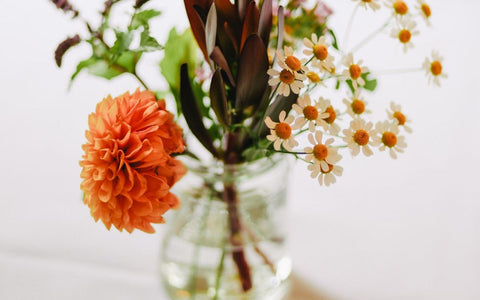Usually, during the winter, fresh local food options become pretty limited, especially if you're based up north like us. Don’t get us wrong—we love pumpkins, potatoes, and other root veggies, but sometimes you just crave something green!
The good news? With the right equipment and a bit of know-how, it’s easier than ever to grow your own fresh, healthy food right at home. Not only will your homegrown produce be more nutrient-dense than store-bought (which has often traveled thousands of miles to get to you), but it’s also going to taste so much better.
Here are our Top 5 Tips for Indoor Gardening During Winter:
Make Sure Your Plants Have Enough Light
During winter, there's a lot less natural light. How much less? It depends on your location, the sun's angle, and other factors. But between shorter days, lower sun angles, and thicker atmospheric layers, your winter sunlight could be up to 75–90% less intense than summer light.
Unless you're incredibly lucky, growing in winter is going to require some supplemental light. This is something we’ve spent a lot of time on. We have an entire YouTube playlist dedicated to it, and several blogs, like this one, to help you get started.
Regulate the Temperature for Your Plants
Most herbs and vegetables thrive in a temperate climate and don’t like temperatures below about 50°F. While indoor gardens might survive below this threshold, their growth could slow significantly. There are many ways to keep your plants warm—the simplest being the same climate control you use for yourself.
If your garden is in a cooler spot, remember that root-zone temperature is more crucial than foliage temperature. Keeping the roots warm can help plants tolerate near-freezing ambient temperatures. A great example is this rooftop hydroponic farm in New York—they keep the water warm with heaters, enabling plants to survive cold weather!
Heat mats are another effective way to warm your plants from underneath. You can find some options on Amazon here (note: this is an affiliate link, and we earn a small commission if you purchase through it. It doesn’t cost you anything extra and helps support our site!).
Don’t Forget to Fertilize
With lower temperatures and less light, your plants will grow more slowly and consume fewer nutrients. If you’re supplementing your indoor garden with nutrients during winter, consider easing off a bit until spring arrives.
Keep the Leaves Clean
Yes, really! This is less of an issue for fast-growing edible plants, but for slower-growing or large-leaved plants, it’s worth wiping the leaves down with a damp cloth. This helps remove dust and allows whatever light is available to reach the plant more effectively.
Watch the Moisture Levels
Plants are sensitive to moisture both above and below the surface. Pay attention to the humidity in your home, especially if your heating system produces dry heat (as many do). If your winter heating removes moisture from the air, consider enclosing your garden or using a humidifier to create a micro-climate for your plants.
Also, be mindful of your watering. Like nutrients, plants drink less when they have less light. Overwatering can cause root rot, so reduce watering slightly and ensure you use well-draining soil.
Ready to give it a shot? Check out our blog on the best herbs to grow in winter—you’ll find all these in our Herb Seed Collection.
We check comments daily, so feel free to leave yours below!








There are no comments for this article. Be the first one to leave a message!